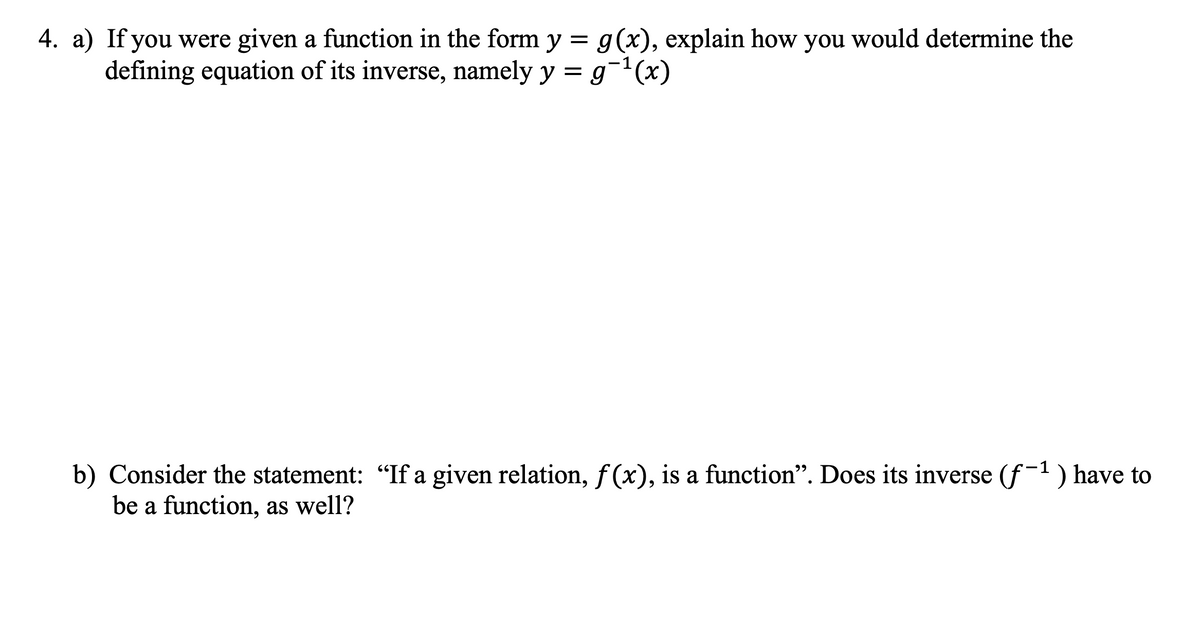4. a) If you were given a function in the form y = g(x), explain how you would determine the defining equation of its inverse, namely y = g¯¹(x) b) Consider the statement: "If a given relation, f(x), is a function". Does its inverse (f-¹) have to be a function, as well?
4. a) If you were given a function in the form y = g(x), explain how you would determine the defining equation of its inverse, namely y = g¯¹(x) b) Consider the statement: "If a given relation, f(x), is a function". Does its inverse (f-¹) have to be a function, as well?
Chapter3: Functions
Section3.7: Inverse Functions
Problem 2SE: Why do we restrict the domain of the function f(x)=x2 to find the function's inverse?
Related questions
Question
100%
Pls help ASAP.

Transcribed Image Text:4. a) If you were given a function in the form y = g(x), explain how you would determine the
defining equation of its inverse, namely y = g¯¹(x)
b) Consider the statement: "If a given relation, f(x), is a function". Does its inverse (f-¹) have
be a function, as well?
Expert Solution
This question has been solved!
Explore an expertly crafted, step-by-step solution for a thorough understanding of key concepts.
Step by step
Solved in 2 steps with 2 images

Recommended textbooks for you


Algebra & Trigonometry with Analytic Geometry
Algebra
ISBN:
9781133382119
Author:
Swokowski
Publisher:
Cengage

Algebra: Structure And Method, Book 1
Algebra
ISBN:
9780395977224
Author:
Richard G. Brown, Mary P. Dolciani, Robert H. Sorgenfrey, William L. Cole
Publisher:
McDougal Littell


Algebra & Trigonometry with Analytic Geometry
Algebra
ISBN:
9781133382119
Author:
Swokowski
Publisher:
Cengage

Algebra: Structure And Method, Book 1
Algebra
ISBN:
9780395977224
Author:
Richard G. Brown, Mary P. Dolciani, Robert H. Sorgenfrey, William L. Cole
Publisher:
McDougal Littell